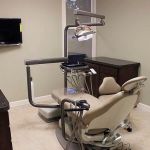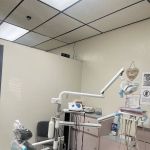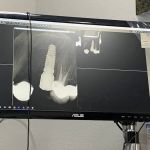SEO Title: How to Get Rid of Plaque Buildup on Your Teeth: Effective Methods for a Healthier Smile
SEO Keywords: get rid of plaque buildup on your teeth, plaque removal tips, how to remove plaque, dental hygiene, plaque buildup solutions
SEO Description: Discover effective methods on how to get rid of plaque buildup on your teeth. Learn the best tips for plaque removal and maintaining optimal dental hygiene for a healthier smile.
How to Get Rid of Plaque Buildup on Your Teeth
- 1. Why Plaque Buildup Is a Concern
- 2. Top Methods to Remove Plaque from Your Teeth
- 3. How to Prevent Plaque Buildup in the Future
- 4. Common Myths About Plaque and Teeth
- 5. Why Dental Visits Are Essential for Managing Plaque
- 6. Additional Steps for Maintaining Long-Term Dental Health
1. Why Plaque Buildup Is a Concern
Plaque buildup on your teeth can be a sneaky problem. Often, it's invisible to the naked eye but can cause significant dental issues if not dealt with. Plaque is a soft, sticky film of bacteria that forms on your teeth throughout the day. It can harden over time into tartar, which can only be removed by a professional dentist. Plaque can lead to cavities, gum disease, and even tooth loss if not properly managed.
Understanding why plaque forms is crucial to addressing the problem. Every time you eat or drink sugary or starchy foods, bacteria in your mouth feed on those food particles and produce acid. This acid, in turn, contributes to the formation of plaque. If plaque isn't regularly cleaned off, it can lead to gum irritation, gingivitis, and other more serious oral health concerns.
2. Top Methods to Remove Plaque from Your Teeth
Now that you understand why plaque buildup is a problem, it’s time to focus on how to get rid of plaque effectively. Here are some of the best methods for plaque removal:
- Brushing Your Teeth Properly: The first and most effective way to remove plaque is by brushing your teeth regularly. Use a fluoride toothpaste and a soft-bristled toothbrush. Be sure to brush for at least two minutes, reaching all surfaces of your teeth. Brushing twice a day can help prevent plaque from accumulating.
- Using an Electric Toothbrush: Electric toothbrushes are more efficient at removing plaque compared to manual brushes. The rotating and vibrating motion helps to dislodge and remove plaque, especially in hard-to-reach areas.
- Flossing Daily: Flossing is just as important as brushing, if not more so. Plaque can form between your teeth and along the gumline, areas where a toothbrush might not reach. Flossing daily removes plaque buildup from these areas and reduces the risk of gum disease.
- Using Mouthwash: Mouthwash can help reduce plaque and prevent it from hardening into tartar. Antimicrobial mouthwash can kill the bacteria responsible for plaque formation and leave your mouth feeling fresh and clean.
- Using a Plaque Remover Tool: There are specialized tools available, such as plaque scrapers or ultrasonic plaque removers, which can be used at home to physically scrape away plaque buildup.
Incorporating these habits into your daily routine can greatly reduce plaque buildup and improve your overall oral hygiene.
3. How to Prevent Plaque Buildup in the Future
Once you’ve successfully removed plaque, it’s important to focus on prevention. Preventing plaque buildup is key to maintaining healthy teeth and gums in the long term. Here are some preventative measures you can take:
- Avoid Sugary Foods and Drinks: Plaque thrives on sugar. By reducing your intake of sugary foods and drinks, you can reduce the food supply for the bacteria that cause plaque. Opt for healthier snacks like fruits, vegetables, and nuts.
- Drink Plenty of Water: Drinking water throughout the day helps rinse away food particles and bacteria. It also helps neutralize acids in your mouth, which can reduce plaque formation.
- Chew Sugar-Free Gum: Chewing sugar-free gum after meals increases saliva production, which helps wash away food particles and bacteria, reducing plaque buildup.
- Visit Your Dentist Regularly: Routine dental checkups are essential for preventing plaque buildup. Dentists can professionally clean your teeth and spot potential plaque or tartar buildup before it becomes a bigger problem.
By making these habits a part of your daily routine, you’ll be able to keep plaque buildup at bay and maintain a healthy smile.
4. Common Myths About Plaque and Teeth
When it comes to plaque, there are a few common misconceptions that can lead to poor oral hygiene practices. Let’s clear up some of these myths:
- Myth 1: Plaque is only visible on the surface of your teeth: Plaque can form in hard-to-reach places, like between your teeth and below the gumline, where it’s not visible. This is why flossing is just as important as brushing.
- Myth 2: Only sugary foods cause plaque buildup: While sugary foods contribute to plaque formation, starchy foods like bread, pasta, and chips can also be broken down by bacteria and turn into acid, which leads to plaque buildup.
- Myth 3: Plaque is harmless until it turns into tartar: Plaque can irritate the gums even before it turns into tartar. This can lead to gum disease if not removed regularly.
Understanding these myths and the true nature of plaque can help you adopt better oral hygiene practices and prevent plaque buildup more effectively.
5. Why Dental Visits Are Essential for Managing Plaque
While brushing and flossing are essential for removing plaque at home, regular dental visits are just as important. Dentists are trained to remove stubborn plaque and tartar that may have built up over time. Additionally, they can offer personalized advice on how to care for your teeth and gums based on your unique needs.
Professional cleanings by a dentist or dental hygienist can help prevent more serious oral health problems, such as gingivitis or periodontitis, which can occur if plaque is allowed to accumulate. Regular checkups also ensure that any dental issues are addressed early, before they become more severe and costly to treat.
6. Additional Steps for Maintaining Long-Term Dental Health
In addition to plaque removal and prevention, maintaining long-term dental health requires a combination of good habits and professional care. Here are some additional steps to take:
- Use a Tongue Scraper: Bacteria can also accumulate on your tongue, contributing to bad breath and plaque buildup. Using a tongue scraper can help keep your mouth clean and fresh.
- Consider Fluoride Treatments: Fluoride strengthens tooth enamel, making it more resistant to plaque buildup and decay. Ask your dentist about fluoride treatments if you’re prone to cavities or plaque buildup.
- Quit Smoking: Smoking can contribute to plaque buildup and gum disease. Quitting smoking will improve your oral health and overall well-being.
By incorporating these additional practices into your routine, you can maintain healthy teeth and gums for a lifetime.







 Great Expressions Dental Centers - Peachtree City4.0 (406 review)
Great Expressions Dental Centers - Peachtree City4.0 (406 review) Metropolitan Endodontics4.0 (307 review)
Metropolitan Endodontics4.0 (307 review) St. Mary's Family Dentistry4.0 (243 review)
St. Mary's Family Dentistry4.0 (243 review) Tyler Dental Center5.0 (7 review)
Tyler Dental Center5.0 (7 review) East Valley Periodontics4.0 (993 review)
East Valley Periodontics4.0 (993 review) Dr. Mahtab Azimi, DDS1.0 (1 review)
Dr. Mahtab Azimi, DDS1.0 (1 review) The Importance of Oral Health Education During Pregnancy for a Healthy Pregnancy
The Importance of Oral Health Education During Pregnancy for a Healthy Pregnancy Best Tips for Brushing Your Teeth Properly for Healthy Gums: Essential Techniques for Oral Health
Best Tips for Brushing Your Teeth Properly for Healthy Gums: Essential Techniques for Oral Health Why Skipping Dental Checkups Can Lead to Bigger Oral Health Problems
Why Skipping Dental Checkups Can Lead to Bigger Oral Health Problems Advantages of Porcelain Dental Restorations
Advantages of Porcelain Dental Restorations How Can Diabetes Cause Tooth and Gum Problems? Preventing and Managing Oral Health Issues
How Can Diabetes Cause Tooth and Gum Problems? Preventing and Managing Oral Health Issues Healthy Habits for Promoting Good Oral Health and Hygiene: Tips for a Healthy Smile
Healthy Habits for Promoting Good Oral Health and Hygiene: Tips for a Healthy Smile